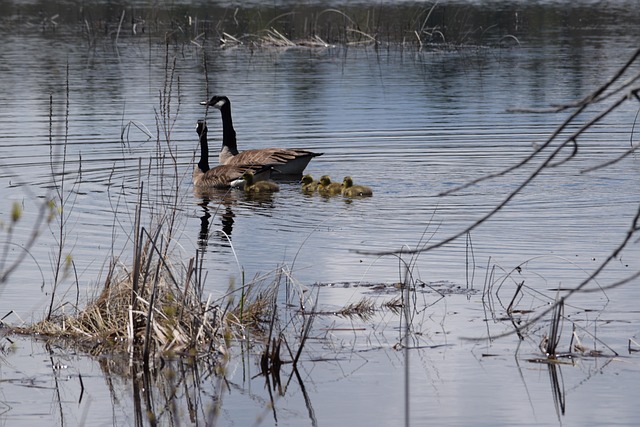Understanding goose behavior is crucial for effective geese control plans. Geese are social birds that prefer familiar feeding areas; repellents should target these spots. Modern solutions like geospatial repellents, automated noise systems, and specialized fencing offer humane, eco-friendly alternatives to traditional methods. Strategic landscape design with specific plants and physical barriers can deter geese. Customized geese control plans incorporate advanced technologies for efficient management, fostering coexistence between humans and wildlife in outdoor spaces.
Implementing effective geese control plans is essential for maintaining outdoor spaces, from parks to agricultural areas. This article delves into innovative solutions beyond traditional methods, exploring how understanding goose behavior can enhance prevention strategies. We compare conventional to cutting-edge techniques, from sound deterrents and visual intimidators to advancements in chemical repellents. Additionally, we discuss landscape design principles that foster goose-resistant environments, offering a comprehensive guide for creating peaceful public spaces.
Understanding Geese Behavior: Key to Effective Repellents
Understanding geese behavior is a crucial step in developing effective geese control plans for outdoor spaces. Geese are social birds and often form flocks, especially during breeding seasons. They have a strong tendency to return to familiar areas where they find food and safe habitats. This behavior makes it essential for repellent solutions to be both persistent and targeted.
Knowing their feeding habits is also vital. Geese primarily feed on grasses, grains, and water plants, so repellents should focus on deterring them from these sources. Visual and olfactory cues play a significant role in scaring geese off. This includes the use of reflective objects, motion-activated devices that emit sounds or spray water, and natural repellents like chili powder or garlic, which can be strategically placed around outdoor areas to discourage geese from landing or feeding.
Traditional vs. Innovative Control Methods: A Comparative Look
Geese have become a growing nuisance in outdoor spaces, from parks and gardens to agricultural fields. Historically, controlling their populations involved traditional methods like noise makers, visual deterrents, and predator introductions. While effective to some extent, these strategies often prove temporary or unreliable. Today, innovative geese control plans are emerging, leveraging cutting-edge technologies and eco-friendly approaches.
Traditional methods can be disruptive to ecosystems and may not always respect wildlife preservation goals. In contrast, modern solutions like geospatial repellents, automated noise systems, and specialized fencing offer more precise, humane, and environmentally friendly alternatives. These innovative geese repellent solutions not only address the immediate issue but also promote long-term sustainability, ensuring harmonious coexistence between humans and these feathered visitors in outdoor spaces.
Geese-Resistant Landscape Design: Creating a Friendly Environment
Creating a geese-resistant landscape design involves integrating smart, humane strategies that deter these birds while maintaining an aesthetically pleasing environment. By understanding geese behavior and preferences, designers can implement specific plant choices and physical barriers that make outdoor spaces less inviting for them. For instance, incorporating plants with strong scents like lavender or sage, known to repel geese, alongside visually striking yet thorny shrubs can effectively keep them at bay.
Additionally, strategically placing wind chimes, reflective objects, or motion-activated sprinklers can disrupt geese and scare them off. These methods not only protect outdoor spaces but also promote a harmonious coexistence with wildlife. Geese control plans should be tailored to the specific needs of each location, considering factors like local regulations, surrounding ecosystems, and the overall goal of creating a friendly environment for both people and animals.
Advanced Technology: Sound, Visual, and Chemical Deterrents Explored
Geese control plans have evolved significantly, integrating advanced technologies to mitigate goose presence in outdoor spaces effectively. Beyond traditional methods like visual barriers and physical deterrents, modern solutions leverage sound, visual, and chemical deterrents for comprehensive geese management.
Sound deterrents employ ultrasonic devices that emit high-frequency sounds unpleasant to geese, while visual deterrents utilize motion-activated lights or reflective objects that startle them. Chemical deterrents, applied strategically, introduce substances that mask aromatic areas, making outdoor spaces less appealing for nesting and feeding. These multi-faceted approaches not only offer more effective goose control plans but also promote safer, more harmonious coexistence between humans and wildlife.
In conclusion, effective geese control plans require a multifaceted approach leveraging insights into goose behavior, innovative technologies, and thoughtful landscape design. By combining traditional methods with modern solutions like sound, visual, and chemical deterrents, we can create outdoor spaces that are both harmonious and free from unwanted feathered visitors. Embracing these innovative strategies ensures peaceful enjoyment of public areas while respecting the natural environment.
